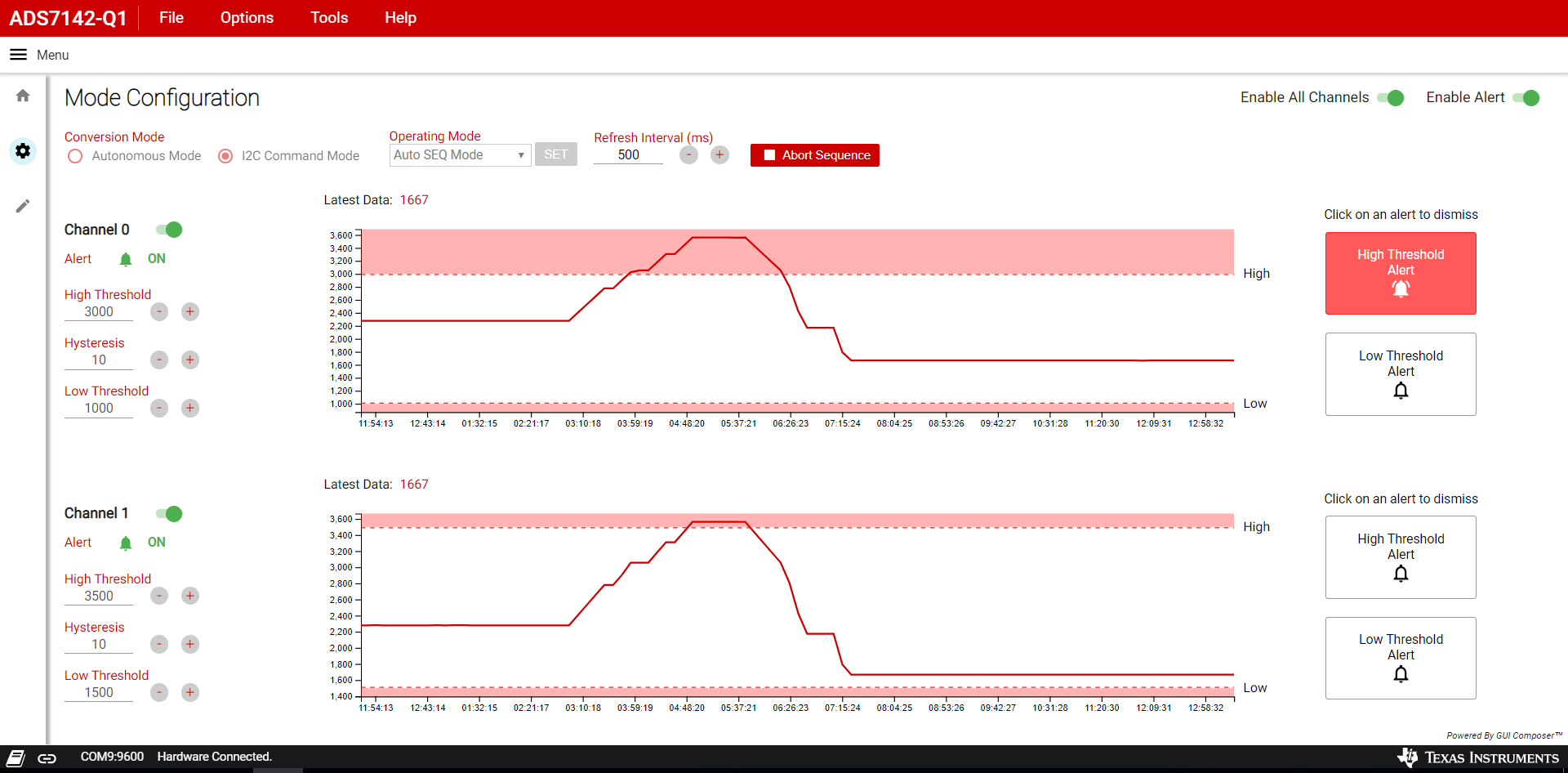SBAU321B November 2018 – June 2021 ADS7142 , ADS7142-Q1
4.3.2 Auto Mode
The host can either configure the device to scan through one channel or both channels by configuring the CHANNEL_IP_CFG register and AUTO_SEQ register. The host has to provide continuous clock (SCL) to the device to scan through the channels and read the data from the device. Figure 4-8 highlights the ADS7142-Q1 GUI working in Manual Mode: Default State.
To understand the steps required to configure the device in Manual Mode, refer to the ADS7142-Q1 data sheet.
 Figure 4-8 Operation in Auto Manual
Mode
Figure 4-8 Operation in Auto Manual
Mode